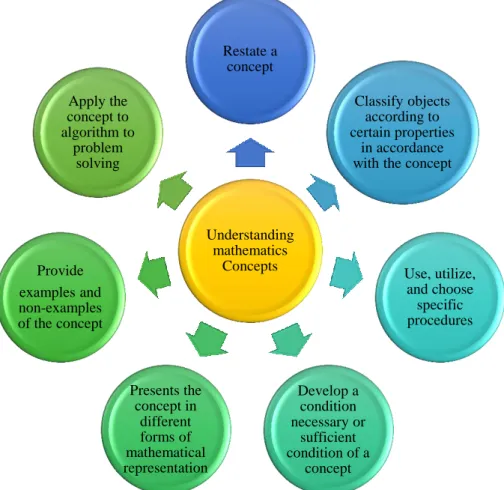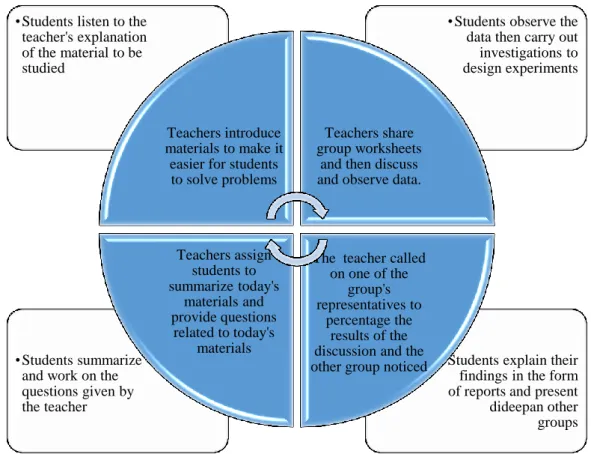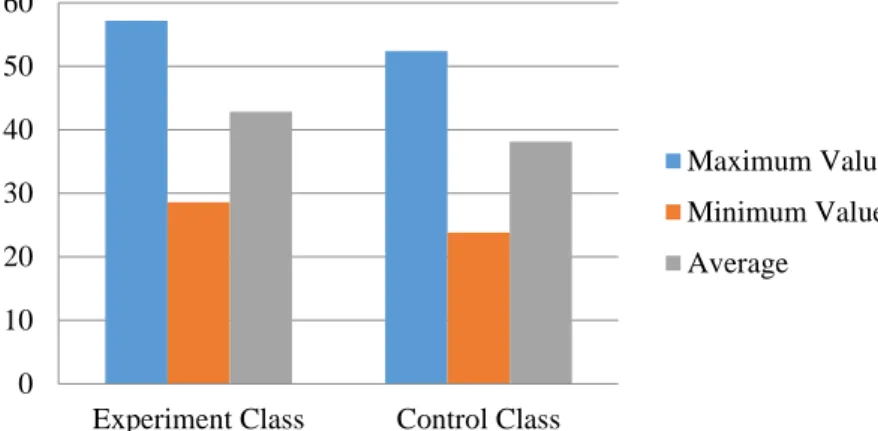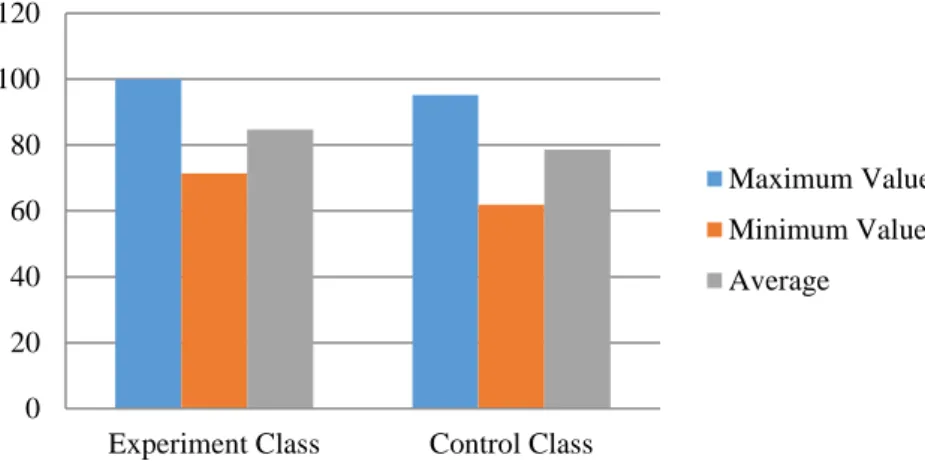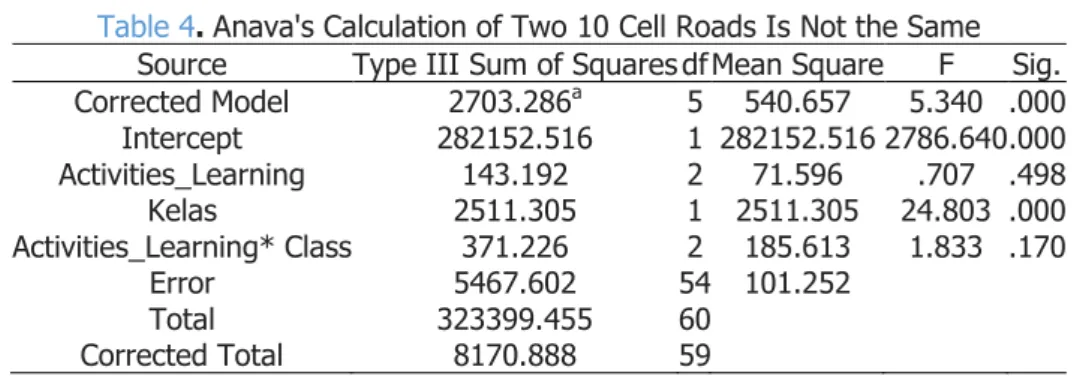ISSN 2722-9688 | e–ISSN 2722-9696 http://jiecr.org | DOI: 10.46843/jiecr.v2i1.21
Analysis of Mathematical Concept Understanding Capabilities: The Impact of Makerspae STEM Learning Approach Models and Student Learning Activities
Komarudin Komarudin
(1), Suherman Suherman
(2), Anita Anggraini
(3)(1) Universitas Islam Negeri Raden Intan Lampung, Indonesia (2) University of Szeged, Hungary
(3) Universitas Islam Negeri Raden Intan Lampung, Indonesia
*Correspondence to: komarudin@radenintan.ac.id
Abstract: This research aims to determine the influence of students' learning activities on the ability to understanding mathematical concepts through the STEM Learning Approach Makerspace model based on PBL on SPLDV materials. As for the type of research Quasi-Experiments. The population in this study was 90 students who were distributed into 3 classes with 2 classes that sampled grades VIII A and VIII C. The sampling techniques in this study used randomized classes and data collection techniques in this study were tests and observations, while the research instruments used preliminary tests and final tests to measure the ability to understand mathematical concepts and observation sheets to see students' learning activities. Data analysis techniques using a two-way ANOVA test. The research showed that there is an influence of the PBL-based Makerspace STEM Learning Approach model on the ability to understand mathematical concepts, there is no influence on students' learning activities on mathematical concept comprehension capabilities, and there is no interaction between the PBL-based Stem Learning Approach Makerspace model and student learning activities on the ability to understand mathematical concepts.
Conclusion, there is a positive direct effect of cognitive structures on the ability to understanding mathematical concepts.
Keywords: science, technology, engineering, and mathematics; STEM learning approach makerspace; problem based learning;
mathematical concepts understanding; learning activities
Recommended citation: Komarudin, K., Suherman, S., & Anggraini, A. (2021). Analysis of Mathematical Concept Understanding Capabilities: The Impact of Makerspae STEM Learning Approach Models and Student Learning Activities. Journal of Innovation in Educational and Cultural Research, 2(1), 35-43.
INTRODUCTION
In this century, educational institutions such as schools and higher education must be able to score a superior generation (Anggraheni & Astuti, 2020; Ekawati et al., 2019; Nurochmah et al., 2019). From this, one of the emphasized in the education system that must run in Indonesia is the learning process of students in the class (Nurdyansyah, 2018) and the purpose of mathematics learning is that students have the ability to understand the concepts (Fitrah, 2017; Komarudin et al., 2020; Mawaddah & Maryanti, 2016a). It is mean that, the mathematics learning is a universal knowledge that is useful for 21st century.
The ability to mathematical concepts understanding is a proficiency or mathematical proficiency that is expected to be achieved such as by showing an understanding of the mathematical concepts he studied, explain the interconnectedness between concepts and apply concepts or algorithms flexibility, accurately, efficiently, and precisely in problem solving (Mawaddah & Maryanti, 2016b). So that, understanding mathematics concept it could be addressed by student to be proficiency.
As part of the reform efforts, the Ministry of Education and Culture has taken the initiative to improve the competence of teachers and students in the fields of Science, Technology, Engineering, and Mathematics (STEM) as well as create a learning experience that prepares students for the challenges of the 21st century
cognitive styles (Hariyanto et al., 2019), to mastery of concepts (Khotimah et al., 2020), to student problem solving skills (Kaniawati & Suwarma, 2015), to improve understanding of concepts (Heryanti, 2020), cognitive ability and creative thinking (Sumarni et al., 2019), towards understanding concepts, critical thinking and creative thinking (Tipani et al., 2019). The update of this study is to use PBL-based STEM to understand the concepts seen from students' learning activities.
STEM teaches students to not only memorize concepts, but to better understand and understand the concepts of science and their relationship to technology, engineering, and mathematics in finding solutions to problems in real life (Dwijananti & Yulianti, 2010; Yanni, 2018), so STEM can help students improve their conceptual understanding skills. The concept understanding indicator can be seen in Figure 1 (Suharto &
Widada, 2019).
Figure 1. Indicators of Mathematical Concept Comprehension Capability
The use of approaches, learning methods and learning orientation can make learning activities in each student's classroom different. Differences in students' learning activities lead to activity levels from low learning activities to high learning activities (Widayanti, 2013). Students' learning activities will not succeed if they are not supported by improved teacher teaching activities (Yulianto et al., 2014). In the PBL-based Makerspace STEM Approach learning, teacher activities and student learning activities inside can be seen in Figure 2.
Understanding mathematics
Concepts Restate a concept
Classify objects according to certain properties
in accordance with the concept
Use, utilize, and choose
specific procedures
Develop a condition necessary or
sufficient condition of a
concept Presents the
concept in different forms of mathematical representation Provide
examples and non-examples of the concept
Apply the concept to algorithm to
problem solving
Figure 2. Storyboard of classroom activities of teachers and students
METHOD
This study was quasi-experiment design method with two-way ANOVA. These research design using two group subject from the population including two experimental classes conduct to the PBL based STEM learning approach Makerspace. Then, the control classes using PBL learning. These method is implemented to see the understanding mathematical concept. This is consistent as stated by Abrahamson, that the experimental method can be said as a research method used to the bringing mathematical concept and effect on others under controlled conditions (Abrahamson & Trninic, 2015).
Participants
The participants of this study was all grade 8th students in the Islamic Junior High School (MTs) Riyadlatul Ulum, Bandar Lampung, Indonesia. The number of the participant was 90 students divided into 3 classes. The samples in this study was grades 8th in class A and class C. Sampling techniques were random sampling. The variables in this study consist of free variables namely PBL-based STEM Learning Approach Makerspace and learning activities while the bound variables were the ability to understand mathematical concepts.
Instrument
The instrument in this study was test. The test to knowing of understanding mathematical concept.
Thesetest is essay with the indicators of mathematical concept and distributed by all samples classes in the
•Students explain their findings in the form of reports and present dideepan other groups
•Students summarize and work on the questions given by the teacher
•Students observe the data then carry out investigations to design experiments
•Students listen to the teacher's explanation of the material to be studied
Teachers introduce materials to make it easier for students to solve problems
Teachers share group worksheets
and then discuss and observe data.
The teacher called on one of the
group's representatives to
percentage the results of the discussion and the other group noticed Teachers assign
students to summarize today's
materials and provide questions
related to today's materials
Figure 3. Research Design
Based on the Figure 3, is experiment class group pre-test, is experiment class group post-test, is pre-test control class group, is post-test control class group, is treatment of researchers with PBL- based STEM Learning Approach Makerspace, and is treatment of researchers using conventional learning models.
Data Analysis
The data analysis technique used is two-way ANOVA. The n-gain test is used to see an increase in the pre-test value to the post-test value.
RESULTS AND DISCUSSIONS
This research was conducted at MTs Riyadlatul Ulum Lampung Timur. Instruments need to be tested outside the sample class. About instruments understanding mathematical concepts as many as 14 questions to be tested. Once tested get results only 7 valid and usable questions. For reliability test about reliable interpretasi.
After the validity test, the level of difficulty, power difference and reliability then 7 tester questions can be used in the sample class. Before learning is given in the sample class is taken a pre-test value first.
The results of the pre-test grades in the experiment class and the control class can be seen in Figure 4 and the post-test values in the experiment class and the control class can be seen in Figure 5.
Figure 4. Experiment Class and Control Class Pre-Test Values Experiment
Class
O
1X
O
2Control Class
O
3Y
O
40 10 20 30 40 50 60
Experiment Class Control Class
Maximum Value Minimum Value Average
Figure 5. Post-test values of the experiment class and the control class
After taking pre-test and post-test grades in the sample class, the N-gain or increase of each class was for the experiment class from 0.50 to 1.00 with moderate to high in achievement, while for the control class from 0.306 to 0.94 with moderate to high in achievement. This means that experiment classes after being treated with the PBL-based Makerspace STEM Learning Approach learning model for improved concept understanding capabilities. The improvement can be seen in Figure 6.
Figure 6. Experiment class N-gain values and control classes
The observation sheet is carried out by the teacher during the learning process or assistance from another observer. In this study, the observation sheet was filled by researchers who observed the student's activities during the learning process. Observations in this study were conducted during the study. The observation sheet assessment results can be seen in Figure 7.
0 20 40 60 80 100 120
Experiment Class Control Class
Maximum Value Minimum Value Average
0 0.2 0.4 0.6 0.8 1 1.2
Experiment Class Control Class
Maximum Value Minimum Value Average
3.01
2.9 2.95 3 3.05
Figure 7 shows that the average grade in the control class is smaller than the average score of the experiment class. From that data, it is known that experimental class students are more active with control classes. The N-gain normality test was conducted to see if the data in the study distributed nomal or not and in the research the data used should be distributed normally to further the next calculation. Test the normality of n-gain in Table 2.
Table 2. N-gain normality Class
Kolmogorov-Smirnova Shapiro-Wilk Statistic df Sig. Statistic df Sig.
N-Gain Class Experiments .114 30 .200* .948 30 .145 Class Control .107 30 .200* .973 30 .617
The Table 2 shows that the sig value. The N-gain sample class is more than the sig value. table i.e.
0.05. From the test results of normality N-gain , then the experiment class data and control class are distributed normally. The n-gain homogeneity test is used after it is known that the data is distributed normally and then continues the homogeneity test calculation to see if the data is homogeneous or not in this study can be seen in Table 3.
Table 3. Experimental Class and Control Class N-gain Homogeneity Test Results Levene Statistic df1 df2 Sig.
N-Gain .145 1 58 .705
Based on the Table 3 the significant level value of mathematical concept understanding capability is 0.705 meaning significant level value≥0.05 means both samples are homogeneous. Further hypothetical tests were conducted using two-way anova, with the results can be seen in Table 4.
Table 4. Anava's Calculation of Two 10 Cell Roads Is Not the Same Source Type III Sum of Squares df Mean Square F Sig.
Corrected Model 2703.286a 5 540.657 5.340 .000 Intercept 282152.516 1 282152.516 2786.640 .000 Activities_Learning 143.192 2 71.596 .707 .498
Kelas 2511.305 1 2511.305 24.803 .000
Activities_Learning* Class 371.226 2 185.613 1.833 .170
Error 5467.602 54 101.252
Total 323399.455 60
Corrected Total 8170.888 59
Based on the calculation of two-way anava are not the same obtained that:
1. The = 0.000 and = 0.05. Thus , it can be concluded that the rejected H_0A means that there is an influence of the PBL-based Makerspace STEM Learning Approach model on understanding mathematical concepts.
2. = 0,498 with = 0,05, this means , so means that there is no influence of students' learning activities on the ability to understand students' mathematical concepts 3. = 0,170 and = 0,05. So . It can be interpreted that is accepted
so that there is no interaction between the use of the PBL-based Makerspace STEM Learning Approach model and student learning activities towards understanding students' mathematical concepts.
The results showed that classes implemented by PBL-based STEM Learning Approach Makerspace were better than those that conventional learning models applied to students' mathematical concept comprehension skills. Makerspace's PBL-based STEM Learning Approach model is implemented in a cool and creative atmosphere (Thahir et al., 2020). In learning that implements STEM is very profitable because it involves students (Chalim et al., 2019; Ulfa et al., 2019) and students are required to discuss giving ideas to answer questions that are in the student worksheet. It is important that PBL-based STEM learning approach can effet of the cognitive style and determine of the mathematical concept.
In the class control used a conventional learning model in which the learning centered on the teacher while the students simply listened, noted, asked about the material submitted by the teacher (Rachmawati,
2016; Roza, 2018). This results in students being less active in the learning process as well as difficulty understanding the material that has been submitted. Unlike learning using PBL-based STEM Learning Approach Makerspace, students tend to be active. Susanti et al. (2018) says that STEM learning with practicum is an interesting innovation and can improve student learning outcomes. The achievement of the results of the results can improve by teaching and learning were used learning approach.
Therefore, students' mathematical concept understanding skills will be better if the learning process is implemented by implementing the PBL-based STEM Learning Approach Makerspace learning model compared to conventional learning models. There are similarities with previous research conducted by Farwati et al.
(2018), et al who stated that the integration of PBL in STEM conveys material by discussing so that it exchanges thoughts between her group friends. As an increasing students' understanding mathematical concept abilities in PBL in STEM refers to the grouping stage of students who are followed up by the treatment given by the teachers’.
Furthermore, for student learning activities in the class obtained that does not affect the ability to understand the mathematical concepts of students but rather more related to the learning model used by the teacher. This is in line with research conducted by Sudarman & Vahlia (2016) entitled effectiveness of the use of Quantum Learning methods towards the ability to understand the mathematical concepts of students getting results that the lack of understanding of thematic conception of students can be due to the lack of focus of students when learning due to the learning model used by teachers less attractive learning students.
Based on the results of the study, there is no interaction between the use of the PBL-based STEM Learning Approach Makerspace model and students' learning activities towards understanding students' mathematical concepts. It is likely that this is due to several factors that result in unfulfilled students focusing on the learning process and classes that are not conducive so as to disrupt the concentration of students.
This mean that, the teaching and learning using PBL-based STEM learning approach can effect of the cognitive aspect, understanding mathematical concept especially.
CONCLUSIONS
The conclusions of this study with the title STEM Learning Approach Makerspace based on PBL to improve the ability to understand mathematical concepts reviewed from student learning activities are there is an influence of the PBL-based STEM Learning Approach Makerspace model on students' mathematical concept understanding capabilities., There is no influence of student learning activities on the ability to understand students' mathematical concepts, and there is no interaction between the use of the PBL-based Makerspace STEM Learning Approach model and student learning activities towards understanding students' mathematical concepts. Based on some of the things that have been conveyed before. Authors can provide suggestions such as math learning is recommended using the PBL-based Makerspace STEM Learning Approach model because students participate in the learning process. Teachers must constantly improve the ability to understand students' mathematical concepts. Students are expected to always be active in the classroom in order to further improve the ability to understand mathematical concepts.
